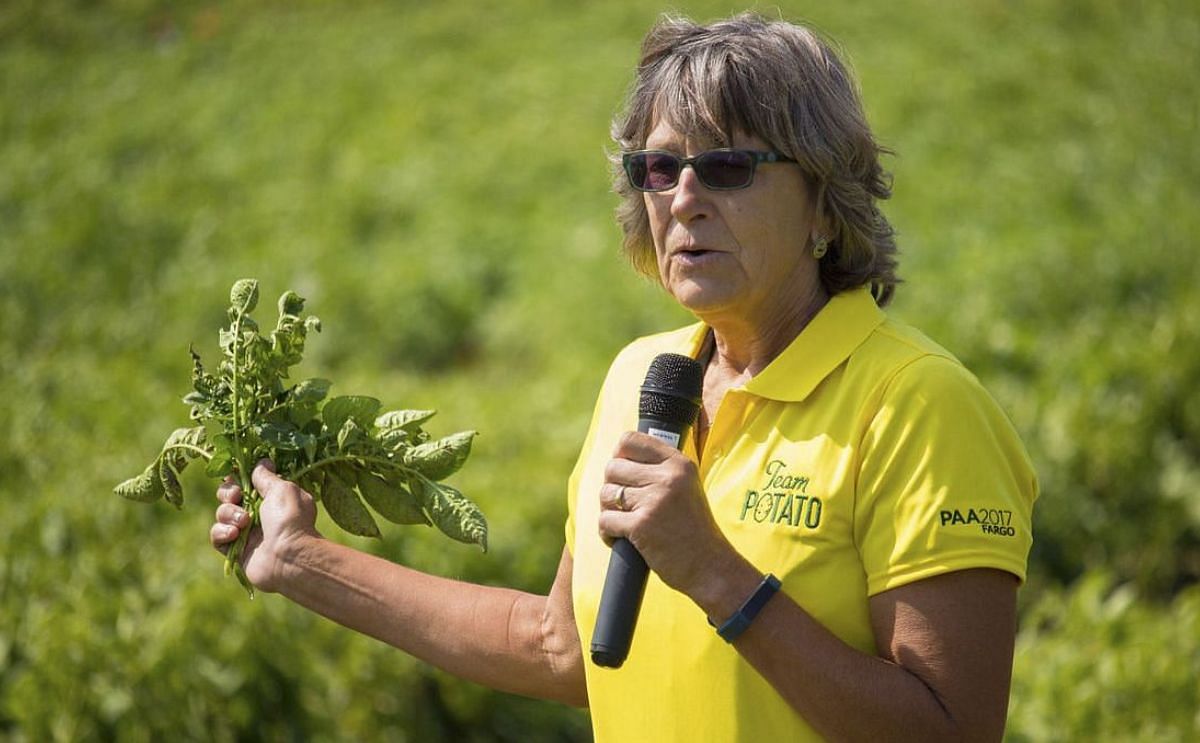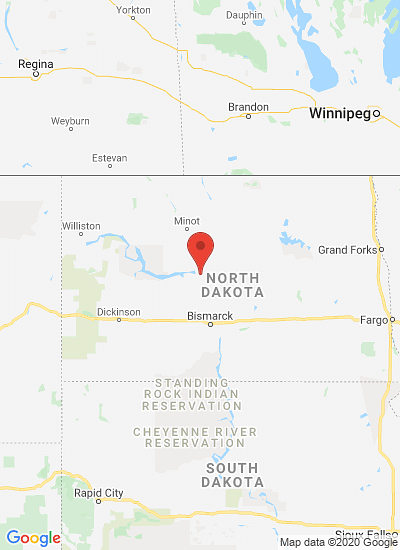NDSU Professor Harlene Hatterman-Valenti talking about her research into the effects of the herbicides dicamba and glyphosate on potatoes. One of her findings is that weather can affect the level of harm done to potatoes by dicamba.
主标签
Potatoes look good in North Dakota, Minnesota

Red River Valley potato growers generally have avoided drought and deluge this growing season. That bodes well for the soon-to-begin 2017 harvest.
Chuck Gunnerson, president of the Northern Plains Potato Growers Association.
“The crop is looking really good in Minnesota, and it looks very good in North Dakota.”
“We are optimistic.”
He was among the nearly 200 people who attended the annual Potato Field Day tour on Thursday. The event was sponsored by the East Grand Forks, Minn.,-based Northern Plains Potato Growers Association and included field tours and presentations by area potato experts in Larimore, Inkster and Hoople, N.D. Lunch, research presentations and a tour of irrigated trials were held at the Forest River Colony near Inkster.
The irrigated potato research is conducted on Hutterite-owned land rented by the potato growers association. The Hutterite colony, which has a Fordville, N.D., postal address, has been irrigating since 1973.
North Dakota and Minnesota are among the country’s top potato producers. The Red River Valley of eastern North Dakota and western Minnesota — where most of the two states’ potato production occurs — is the nation’s leading producer of red potatoes and the only region that produces in volume for the chip, fresh, seed and process markets.
Prime potato-growing areas in northeast North Dakota were hammered with rain during the 2016 growing season, in some cases twice as much as normal. That created anxiety during the 2016 Potato Field Day tour and ultimately hurt yields in many potato fields.
This year, in contrast, much of northeast North Dakota received less rain than normal, but the shortfall generally wasn’t as severe as in drought-stricken parts of North Dakota, South Dakota and Minnesota. What’s more, good subsoil moisture in northeast North Dakota — a result of the 2016 deluge — has helped to offset below-normal precipitation this growing season in potato fields overall.
Andy Robinson, Fargo-based extension potato specialist with both North Dakota State University and the University of Minnesota:
“There are always pockets that are too dry or two wet. And we have pockets this year that are too dry.”
“But overall, the crop has done well, thanks to both timely rains and plentiful subsoil moisture.”
The area’s potato harvest is expected to begin about Sept. 10, and favorable weather — especially cool nights and another timely rain — would help potatoes bulk up, Robinson said.
Andy Robinson:
“It’s been a good growing season, but these last few weeks will be so important”









